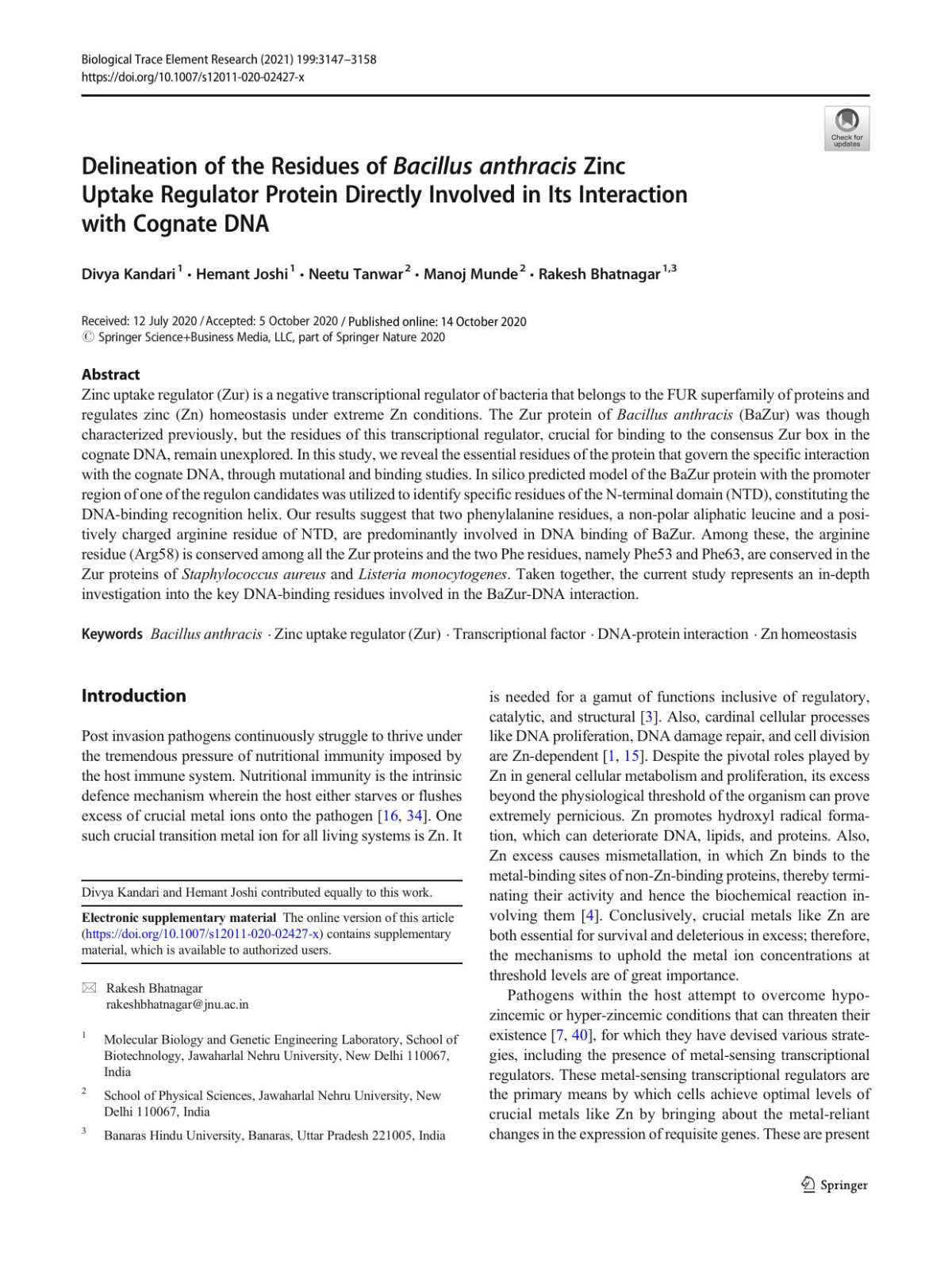

Most ebook files are in PDF format, so you can easily read them using various software such as Foxit Reader or directly on the Google Chrome browser.
Some ebook files are released by publishers in other formats such as .awz, .mobi, .epub, .fb2, etc. You may need to install specific software to read these formats on mobile/PC, such as Calibre.
Please read the tutorial at this link: https://ebookbell.com/faq
We offer FREE conversion to the popular formats you request; however, this may take some time. Therefore, right after payment, please email us, and we will try to provide the service as quickly as possible.
For some exceptional file formats or broken links (if any), please refrain from opening any disputes. Instead, email us first, and we will try to assist within a maximum of 6 hours.
EbookBell Team

4.3
88 reviewsZinc uptake regulator (Zur) is a negative transcriptional regulator of bacteria that belongs to the FUR superfamily of proteins and regulates zinc (Zn) homeostasis under extreme Zn conditions. The Zur protein of Bacillus anthracis (BaZur) was though characterized previously, but the residues of this transcriptional regulator, crucial for binding to the consensus Zur box in the cognate DNA, remain unexplored. In this study, we reveal the essential residues of the protein that govern the specific interaction with the cognate DNA, through mutational and binding studies. In silico predicted model of the BaZur protein with the promoter region of one of the regulon candidateswas utilized to identify specific residues of the N-terminal domain (NTD), constituting the DNA-binding recognition helix. Our results suggest that two phenylalanine residues, a non-polar aliphatic leucine and a positively charged arginine residue of NTD, are predominantly involved in DNA binding of BaZur. Among these, the arginine residue (Arg58) is conserved among all the Zur proteins and the two Phe residues, namely Phe53 and Phe63, are conserved in the Zur proteins of Staphylococcus aureus and Listeria monocytogenes. Taken together, the current study represents an in-depth investigation into the key DNA-binding residues involved in the BaZur-DNA interaction.